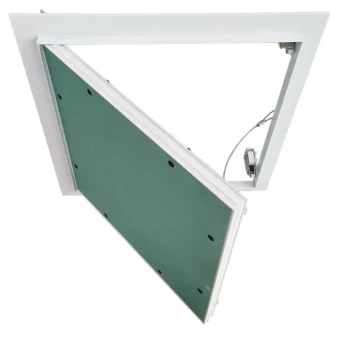- Afrikaans
- Albanian
- Amharic
- Arabic
- Armenian
- Azerbaijani
- Basque
- Belarusian
- Bengali
- Bosnian
- Bulgarian
- Catalan
- Cebuano
- Corsican
- Croatian
- Czech
- Danish
- Dutch
- English
- Esperanto
- Estonian
- French
- German
- Greek
- Hindi
- Indonesian
- irish
- Italian
- Japanese
- Korean
- Lao
- Malay
- Myanmar
- Norwegian
- Norwegian
- Polish
- Portuguese
- Romanian
- Russian
- Serbian
- Spanish
- Swedish
- Thai
- Turkish
- Ukrainian
- Uzbek
- Vietnamese
ທ.ວ. . 01, 2024 20:11 Back to list
Standard Sizes for Ceiling Access Panels and Their Applications in Various Environments
Understanding Standard Ceiling Access Panel Sizes
When it comes to building and construction, ceiling access panels play a crucial role in facilitating maintenance and providing easy access to critical systems above ceilings. This makes them an essential element in both residential and commercial settings. However, one key consideration that builders and homeowners must make is the size of these access panels. This article delves into the standard ceiling access panel sizes, their importance, and how to choose the right size for your project.
What is a Ceiling Access Panel?
A ceiling access panel is typically a hinged or removable section of the ceiling that allows for access to plumbing, electrical wiring, and HVAC systems located above it. These panels not only provide convenience for maintenance and inspections but also enhance the overall functionality of a space.
Standard Sizes and Dimensions
The most common sizes for ceiling access panels are typically standardized to fit industry norms. The dimensions can vary depending on specific needs and settings, but some standard sizes include
- 12” x 12” (30 cm x 30 cm) This is one of the smallest sizes available, often used for spaces that require limited access, such as to small plumbing fixtures or wiring. - 14” x 14” (35 cm x 35 cm) Slightly larger than the 12x12 panel, this size is commonly found in residential homes and can access various utilities without taking up much ceiling space. - 16” x 16” (40 cm x 40 cm) This size is versatile and can cater to multiple access needs, making it a popular choice for both residential and commercial properties. - 24” x 24” (60 cm x 60 cm) Widely used in commercial buildings, this size provides ample space for accessing larger installations like HVAC systems. - 36” x 36” (90 cm x 90 cm) This size is less common but is ideal for extensive maintenance of larger equipment and systems.
Understanding these standard sizes is imperative when planning a construction or renovation project.
Importance of Choosing the Right Size
Choosing the correct access panel size is crucial for several reasons
standard ceiling access panel sizes

1. Accessibility An access panel that is too small will hinder maintenance efforts and could lead to damage when trying to reach behind it. Conversely, a panel that is too large may reduce the aesthetic appeal of a ceiling.
2. Functionality Different systems require varying access levels. For example, panels for electrical access need to accommodate tools, while plumbing panels need room for hands and equipment.
3. Building Codes Many regions have specific building codes that dictate the minimum and maximum dimensions for access panels in certain settings. Adhering to these codes ensures safety and compliance.
4. Aesthetics An appropriately sized access panel blends seamlessly with the ceiling design, which is particularly important in high-end residential projects or commercial spaces where design is a priority.
Selecting the Right Panel
When selecting an access panel, consider the following factors
- Location Determine where the panels will be installed. Depending on the room's function and the systems you need to access, a certain size may be more appropriate. - Type of Access Needed If you need frequent access, larger panels may be more advantageous. If access is infrequent, smaller panels may suffice. - Material and Finish Access panels come in various materials such as plastic, metal, and gypsum. The choice of finish must match the ceiling for a more appealing look.
Conclusion
Ceiling access panels may seem like a minor detail in building design, but their importance cannot be overstated. Understanding the standard sizes available and their implications on accessibility, functionality, and aesthetics is crucial for any construction project. By choosing the right size, builders and homeowners not only facilitate easier maintenance but also ensure compliance with building codes and enhance the overall design aesthetics of a space. Whether you are working on a residential home or a commercial property, taking the time to consider your options can lead to a more efficient and visually appealing result.
-
Transform Interiors with PVC Gypsum Ceiling: A Stylish, Durable, and Moisture-Resistant SolutionNewsMay.19,2025
-
The Smart Interior Upgrade: Discover the Durability and Versatility of Gypsum Ceiling Access Panel SolutionsNewsMay.19,2025
-
The Smart Choice for Interior Design: Discover the Value of PVC Gypsum Ceiling SolutionsNewsMay.19,2025
-
Mineral Fiber Ceiling Tiles: The Smart Blend of Performance and AestheticsNewsMay.19,2025
-
Mineral Fiber Ceiling Tiles: The Superior Choice Over Gypsum for Sound and Fire SafetyNewsMay.19,2025
-
Mineral Fiber Ceiling Tiles: Eco-Friendly Strength and Style for Every CeilingNewsMay.19,2025







